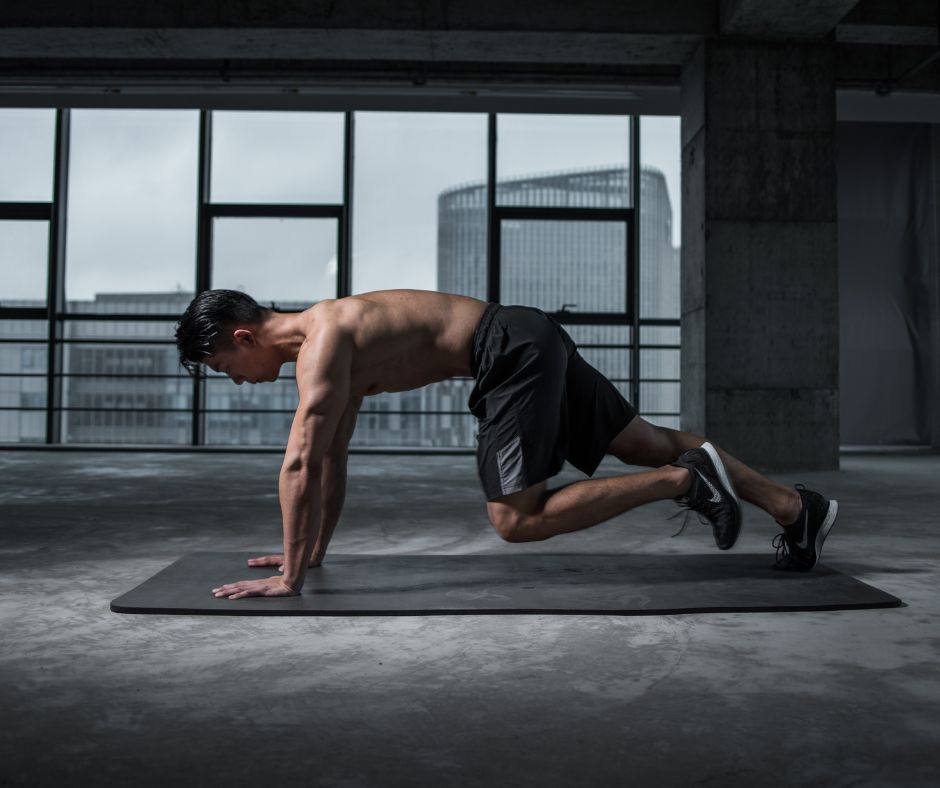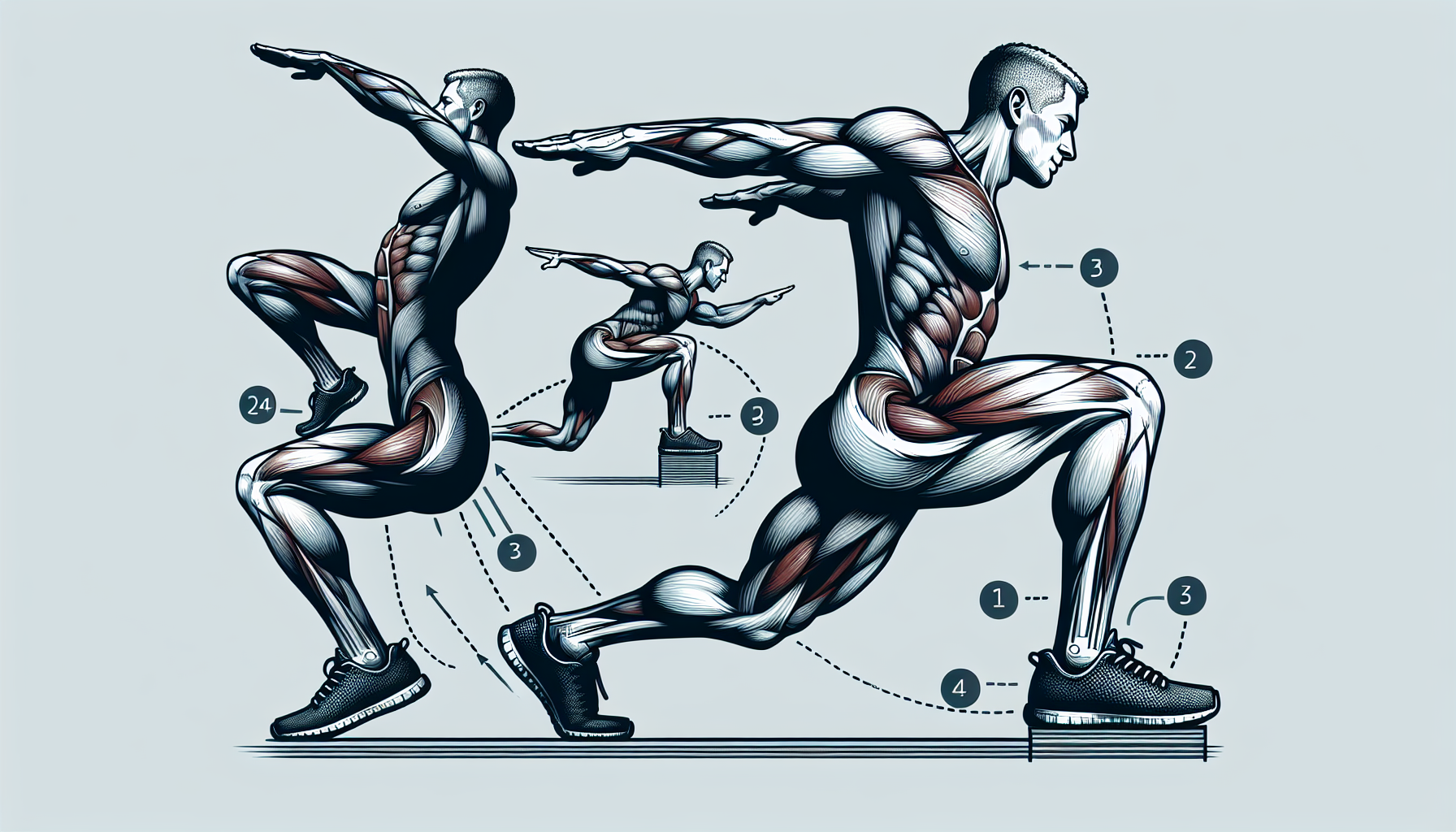At-Home Hamstring Workouts: The Essential Guide 2024

Top 8 Hamstring Workouts at Home: Build Strength Without Equipment
Building stronger hamstrings at home is simple with the right hamstring exercises. Whether you’re starting out or pushing your limits, our handpicked hamstring workouts at home optimize your routine with just your body weight. Discover how to effectively enhance leg strength and prevent injuries with our practical, no-equipment solutions.
Key Takeaways
-
Performing hamstring exercises at home is a powerful way to prevent injuries, improve stability and mobility, and build aesthetically pleasing leg muscles.
-
Bodyweight movements and creative uses of household items for resistance can effectively enhance hamstring strength without the need for expensive gym equipment.
-
A combination of proper form, progressive overload, diversified exercise selection, and adequate nutrition is key to maximizing muscle growth and achieving optimal results from hamstring workouts.
Unlocking the Power of Hamstring Workouts at Home

Strong hamstrings play a lead role in life’s physical drama as essential leg muscles. They keep us stable on our feet, power us forward in a sprint, and act as the body’s natural shock absorbers. Whether you’re chasing a bus or chasing after your kids, these muscles are working overtime to keep you moving with grace and power. And let’s not forget their pivotal role in sculpting an enviable set of legs—adding hamstring exercises to your routine at home can carve out definition and build strength that turns heads.
But strong hamstrings aren’t just for show; they’re your first line of defense against common injuries. A hamstring workout is like armor for your lower back, safeguarding you from the strains of daily life. Engaging in top-notch hamstring exercises is not just a step towards a chiseled physique; it’s a valuable investment in your health and resilience.
Essential Bodyweight Moves for Hamstring Development

When it comes to building muscle, sometimes the simplest tools are the most effective. Your own body weight is a prime example—accessible, adaptable, and always at the ready. From the hip-hinging grace of good mornings with feet hip width apart to the balance-challenging single-leg deadlift, bodyweight exercises offer a solid foundation for hamstring development.
These exercises harness the power of gravity and your own weight to create resistance, firing up those glutes and hamstrings in a symphony of strength. They are versatile, requiring no more than a little floor space, and can be easily modified to increase intensity as you progress. Some examples of these exercises include:
-
Squats
-
Lunges
-
Glute bridges
-
Deadlifts
-
Step-ups
Incorporating these exercises into your workout routine will help you build strong and toned glute and hamstring muscles.
Whether you’re mastering the hip hinge in a good morning routine or performing a reverse lunge, your hamstrings will surely benefit from learning to hinge forward properly during hip extension exercises.
Glute Bridge March
Take the humble glute bridge to the next level with a march that challenges your coordination and endurance. Start by positioning yourself with your feet hip width apart and knees bent. Lie back, lift your hips, and alternate kicking your feet as if you’re marching on a cloud, all while keeping your pelvis as still as a statue. This movement isn’t only for aesthetics—it’s a tool for cultivating formidable strength from your hamstrings up to your core, with the added benefit of knee flexion.
While you march, focus on squeezing those glutes and hamstrings with each step, keeping your leg straight. It’s like conducting an orchestra where every muscle plays its part in perfect harmony. This ensures your lower back isn’t taking the lead, protecting it from the undue strain as you work towards a stronger lower body.
Single-Leg Romanian Deadlift
The Single-Leg Romanian Deadlift is a masterpiece of balance and targeted strength, isolating one leg at a time to sculpt and strengthen. It’s a dance of control:
-
one leg rooted to the ground
-
the other extended back
-
your body tipping forward with the poise of a ballet dancer
-
all while your hamstrings work in quiet intensity.
This exercise serves a dual purpose: it builds muscle and uncovers the subtle imbalances inherent in everyone. It’s a journey of self-awareness that teaches your body to work in symphony, correcting those imbalances and crafting a more resilient frame. And for those craving more, grab a backpack and fill it with weights. Hold it in front as you slowly lean forward with your knees slightly bent, and feel your hamstrings engage even deeper. As you do this, remember to keep your hips forward and legs straight to maintain proper form.
Downward Dog Calf Raises
Unleash the full potential of the Downward Dog by adding calf raises to this yoga staple. As you push your hips to the sky, forming a ‘V’ that would make any yogi proud, you’re not just stretching your hamstrings—you’re giving your calves a raise they won’t forget.
This blend of stretch and strength is a two-for-one deal that your body will thank you for. As your calves rise and fall, your hamstrings stretch and strengthen, creating a foundation of flexibility and power that benefits every movement you make.
Innovative Ways to Add Resistance

Who says you need a gym full of equipment to get a good workout? With a little creativity, anything from resistance bands to a weighted YBell can turn your living room into a state-of-the-art fitness studio. These tools aren’t just space savers; they’re budget-friendly solutions to ramp up the intensity of your hamstring workouts.
Adding resistance intensifies the muscle workout, stimulating them to become stronger with each curl and hinge. Whether you’re looping a filled backpack around your ankles for leg curls or strapping on a band for good mornings, each movement becomes a deliberate act of strength training.
Water Bottle Leg Curls
In the quest for stronger hamstrings, sometimes the most unexpected items become your best allies. Here’s a simple exercise you can try:
-
Grab a backpack
-
Fill it with water bottles
-
Secure it around your ankles
-
Lie face down and curl those bottles towards your glutes
By doing this exercise, you’re not just lifting water—you’re elevating your hamstring workout to new heights.
Each curl engages the biceps femoris, a key hamstring muscle, mimicking the leg curls typically done at the gym. It’s a simple yet effective way to add weight, challenge your muscles, and keep your strength training fresh and engaging.
Backpack Hip Thrusts
If you thought hip thrusts were effective before, wait until you add the weight of a loaded backpack. This added resistance means your glutes and hamstrings have to work even harder to lift your hips off the ground, turning a familiar exercise into an intense muscle-building challenge. To perform this exercise, start with your feet hip width apart.
The beauty of using a backpack is that it’s easily adjustable; you can add or remove weight to match your fitness level. So as you thrust your hips skyward, with your feet shoulder width apart, you’re not just working on your posterior chain—you’re customizing your workout to ensure consistent progress and peak muscle activation.
Advanced Hamstring Challenges
Ready to take your hamstring training to new heights? Advanced exercises like Nordic curls and stability ball movements are your ticket to a world of increased muscle engagement and strength gains. By adding complexity to your routine, you’re challenging your muscles to adapt and grow in ways they never have before.
These advanced movements are not just for show; they are designed to challenge your limits while ensuring impeccable form. From sumo deadlifts that emphasize the eccentric phase to single-leg bridges that recruit a symphony of supporting muscles, every rep is an opportunity to refine and enhance your muscular prowess.
Elevated Single-Leg Glute Bridge
The elevated single-leg glute bridge is an ascent to peak hamstring conditioning. By lifting one foot onto a higher platform, you’re expanding the range of motion and dialing up the intensity. Your hamstrings will have to stretch further and contract harder to complete each rep, leading to greater muscle activation and development.
This exercise isn’t just about elevation; it’s about evolution. As you challenge your muscles with this advanced move, consider adding an extra weight near your midsection. This additional resistance means your muscles won’t just adapt—they’ll transform.
Stability Ball Hamstring Curls
Take your hamstring workout off solid ground and onto a stability ball for a challenge that rocks, literally. As you roll the ball towards and away from your body, every muscle fiber in your hamstrings and core must engage to keep you balanced and moving smoothly.
This exercise is a balance beam for your hamstrings, testing your stability and endurance while giving you a full-body workout. It’s a perfect example of how a single move can target multiple muscle groups, making the most of your time and effort.
Crafting Your Hamstring Workout Routine
A well-structured hamstring workout is like a well-composed symphony—every set, rep, and rest period plays a crucial role in the overall performance. To strike the right chord, aim for 3 to 4 sets of each exercise, with 8 to 10 reps and a brief interlude of 45 to 60 seconds between sets to catch your breath and prepare for the next movement.
When crafting your routine, bear in mind the significance of variety in maintaining an effective workout regime. Here are some tips to keep in mind:
-
Mix up your exercises to target different muscle fiber types
-
Adjust your training volumes to keep your hamstrings guessing and growing
-
Periodization is your friend, gradually increasing intensity to ensure your muscles can sing their strongest tune without missing a beat.
Fine-Tuning Your Form
The grace of a well-executed hamstring exercise is in the details. Like a sculptor chiseling away at a block of marble, every nuance in your form can reveal the strong, lean muscles underneath. Correct form is the key to unlocking the full potential of each movement, ensuring that your hamstrings—not your back or other muscles—are the stars of the show.
As you engage in each exercise, keep a mental checklist: core engaged, spine neutral, movements controlled. It’s the difference between a good workout and a great one, and it’s what will keep you safe from injury while you pursue your strength goals.
Next time you begin your workout, bear in mind that maintaining proper form is fundamental—it’s the key to transforming a routine into an exceptional workout.
Tips for Maximizing Hamstring Workout Results
Imagine if each workout could be more effective than the last. That’s the power of progressive overload—gradually increasing your resistance to build muscle and strength with each session. And don’t underestimate the power of rest; tailored recovery periods between sets allow your muscles to prepare for the next challenge, maximizing growth and minimizing fatigue.
Introduce variety to your hamstring workouts with diverse set types and controlled eccentric movements, and observe your muscles develop increased strength. For an extra push, try walking lunges with larger steps to really fire up those hamstrings and address any strength imbalances. It’s all about fine-tuning the machine that is your body, ensuring every workout is a step toward your best self.
Nourish to Flourish: Supporting Muscle Growth
After a grueling workout, your muscles are crying out for nourishment—give them what they need to grow stronger. A balanced diet rich in proteins, amino acids, and carbohydrates is the fuel that fires up recovery and enhances performance. It’s not just about the reps and sets; it’s about the post-workout meal that rebuilds and revitalizes your muscles.
Bear in mind, muscle tissue repair and growth are expedited when your body is nourished with the correct nutrients in appropriate amounts. Supplements like whey protein can reduce muscle damage, while increasing your carbohydrate intake during long workouts can aid in recovery and decrease muscle damage. So make sure your kitchen is stocked with muscle-friendly foods—it’s the final ingredient in a recipe for unstoppable strength.
Summary
You’ve just journeyed through a treasure trove of exercises and tips to forge strong, resilient hamstrings—no gym required. From the foundational bodyweight moves to ingenious resistance hacks and advanced challenges, you’ve got all the tools you need to sculpt a powerful lower body. Remember, it’s not just about the exercises; it’s about crafting a routine, fine-tuning your form, and nourishing your body to achieve peak performance. Take these insights, apply them with passion, and watch as your hamstrings transform, propelling you to new heights of strength and stability.
When you want to take your safe, at-home workouts to the next level, consider QuickHIT's proprietary at-home machine. Our machine allows you to get a world-class workout from the comfort of your own home. If you're interested, please contact us.
Frequently Asked Questions
How can I build my hamstrings at home?
You can build your hamstrings at home by doing exercises like Good Mornings, Bodyweight Squats, Floor Bridge, Donkey Kick, and Standing Marches. Start incorporating these into your home workout routine to see results.
Can I really build strong hamstrings at home without any equipment?
Yes, you can definitely build strong hamstrings at home using bodyweight exercises and innovative methods like using a backpack for resistance. Get started today and feel the difference in no time!
How often should I perform these hamstring exercises?
You should perform these hamstring exercises 2-3 times a week, aiming for 3 to 4 sets of each exercise with 8 to 10 reps, and allowing for rest days in between for muscle recovery. Your consistency will lead to noticeable results!
How can I make sure I'm doing the exercises correctly to avoid injury?
To make sure you're doing the exercises correctly and prevent injury, focus on maintaining proper form by engaging your core, keeping a neutral spine, and controlling your movements. Watching instructional videos or consulting a fitness professional can also be helpful. Take care and stay injury-free!
Is it necessary to use supplements for muscle recovery?
Yes, using supplements like whey protein can aid in muscle recovery, but they should complement a balanced diet. It's not necessary to rely solely on supplements.

